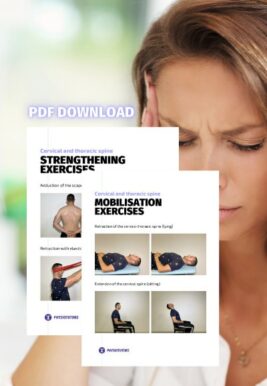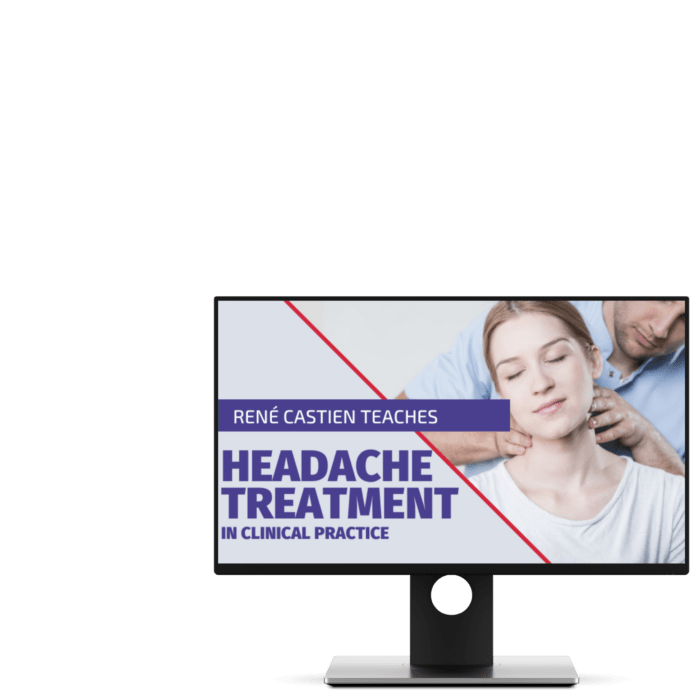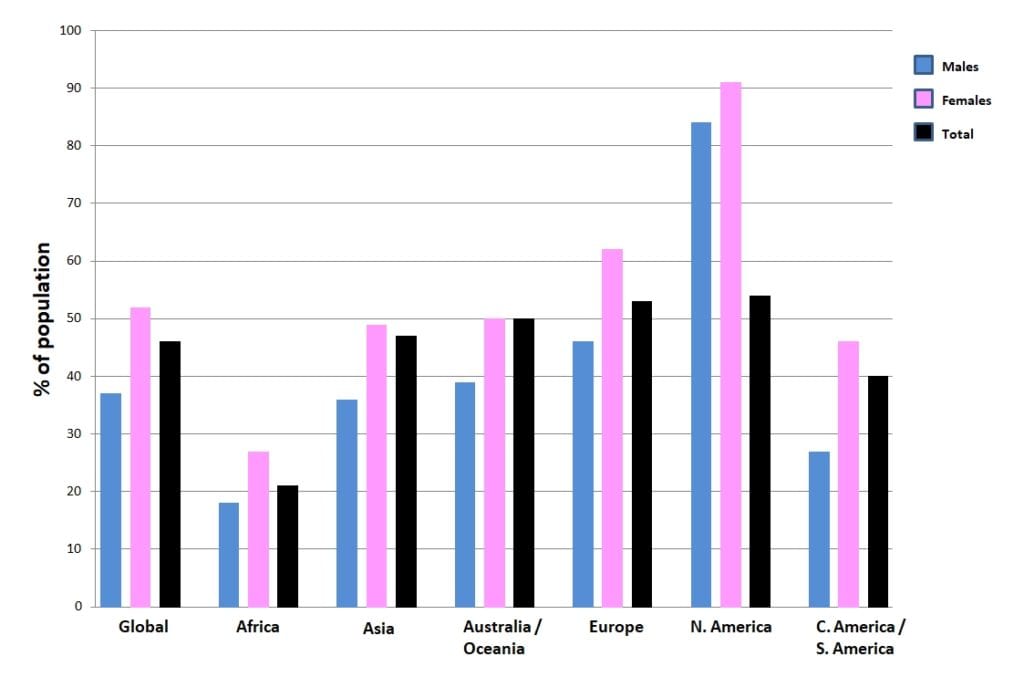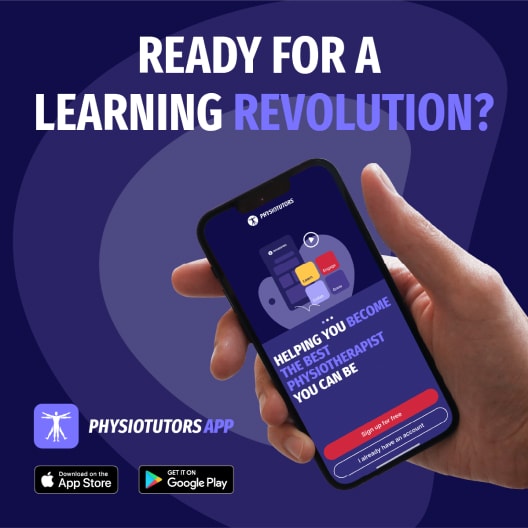Migraine | Diagnosis & Treatment | All a physio needs to know

Physiotherapy for Migraines | Assessment & Treatment
Introduction & Epidemiology
The word “migraine is derived from the Greek word “hemikrania,” which was eventually translated into Latin as “hemigranea,” which was eventually translated to “migraine” in French. They are characterized by throbbing pain on one side of the head, a migraine is a moderate to severe headache.
Migraine attacks are intricate brain processes that frequently last from several hours to several days. Without an aura, migraines are most frequently encountered (75 percent of cases).
Additionally, a lot of people experience symptoms like feeling or being unwell, as well as increased sensitivity to light or sound.
Around 1 in 5 women and 1 in 15 men suffer from migraines, making it a widespread medical disease. Early adulthood is typically when they start.
Epidemiology
Stovner et al. (2007) found a lifetime prevalence of 14% for migraine. Migraines are about 3 times more prevalent in women compared to men. First episodes often start during puberty and prevalence increases until the ages of 35 to 39 before it decreases, especially after menopause (Lipton et al. 2007). In addition, it is ranked second in terms of the number of years people spend living with a handicap, after back pain.
When looking at the current prevalence of different forms of headaches, TTH is the most prevalent form in the adult population worldwide with a mean prevalence of 42%, followed by migraine with 11% (Stovner et al. (2007). The following graph shows the current prevalence of different forms of headaches in different age categories (Stovner et al. (2007):

The following figure shows the prevalence of headaches on different continents around the world:
Follow a course
- Learn from wherever, whenever, and at your own pace
- Interactive online courses from an award-winning team
- CEU/CPD accreditation in the Netherlands, Belgium, US & UK
Clinical Picture & Examination
The ICD-H III defines the following criteria to diagnose a migraine headache without aura:
Recurrent headache disorder manifesting in attacks lasting 4-72 hours. Typical characteristics of the headache are unilateral location, pulsating quality, moderate or severe intensity, aggravation by routine physical activity, and association with nausea and/or photophobia and phonophobia.
Diagnostic criteria:
A. At least five attacks1 fulfilling criteria B-D
B. Headache attacks lasting 4-72 hr (untreated or unsuccessfully treated)2;3
C. Headache has at least two of the following four characteristics:
1. unilateral location:
- pulsating quality
- moderate or severe pain intensity
- aggravation by or causing avoidance of routine physical activity (eg, walking or climbing stairs)
2. During headache at least one of the following:
-
- nausea and/or vomiting
- photophobia and phonophobia
Migraines with aura are defined as follows:
Recurrent attacks, lasting minutes, of unilateral fully-reversible visual, sensory or other central nervous system symptoms that usually develop gradually and are usually followed by headache and associated migraine symptoms.
Diagnostic criteria:
A. At least two attacks fulfilling criteria B and CB. One or more of the following fully reversible aura symptoms:
- visual
- sensory
- speech and/or language
- motor
- brainstem
- retinal
C. At least three of the following six characteristics:
- at least one aura symptom spreads gradually over ≥5 minutes
- two or more aura symptoms occur in succession
- each individual aura symptom lasts 5-60 minutes1
- at least one aura symptom is unilateral2
- at least one aura symptom is positive3
- the aura is accompanied, or followed within 60 minutes, by headache
D. Not better accounted for by another ICHD-3 diagnosis.
Examination
In comparison with healthy controls, migraineurs differ on provocation testing as well as neck endurance testing.
In comparison, Szikszay et al. (2019) conducted a systematic review and meta-analysis on the differences between MSK impairments in migraineurs and healthy people.
They recommend including testing for limited cervical ROM including the flexion-rotation test, forward head position, and pressure pain thresholds.
The goal of provocation tests is to recreate the patient’s familiar pain. This way, you are able to confirm the location of nociception in the cervical structures, possibly leading to referred pain to the head. While provocative testing for CGH can be done with the techniques shown in the following tab, the phenomenon of referred pain to the head for tension-type headaches and migraine can be provoked with the Watson test:
Although no clear cut-off values are given, the performance time can give an indication about neck flexor endurance:
Upper cervical range of motion in the direction of rotation can be reliably and accurately assessed with the Flexion-Rotation Test (Hall et al. 2010a, Ogince et al. 2007, Hall et al 2010b). This test – if positive – can give you an indication of limited rotation on segments C1/C2. In turn, hypomobility on C0/C1 or C2/C3 can lead to this limitation in rotation on C1/C2.So in case of a positive test, we still need to perform intervertebral motion assessment of all upper cervical segments in order to find the dysfunctional segment.
100% Free Headache Home Exercise Program

Follow a course
- Learn from wherever, whenever, and at your own pace
- Interactive online courses from an award-winning team
- CEU/CPD accreditation in the Netherlands, Belgium, US & UK
Treatment
In the review and meta-analysis by Luedtke et al. (2016), it was found that sub-analyses of the different physiotherapy interventions showed that aerobic exercise and a combination of physical and psychological interventions were effective for the reduction of migraine attack duration; however, no trials were available that used either manual therapy, trigger point therapy, or strength training. In their systematic review and meta-analysis, Lemmens et al. (2019) confirm that aerobic exercise seems to be able to reduce migraine frequency with a mean reduction of 0.6 ± 0.3 migraine days/month. Krøll et al. (2018) investigated the effects of aerobic exercise in migraineurs with concomitant TTH and neck pain and found that exercise reduced migraine frequency, pain intensity, and duration pre and post-intervention. However, compared to the control group, the results did not reach significance.
In the case that neck endurance is reduced, you might want to try the following exercise program:
References
Follow a course
- Learn from wherever, whenever, and at your own pace
- Interactive online courses from an award-winning team
- CEU/CPD accreditation in the Netherlands, Belgium, US & UK
Finally Learn how to Diagnose & Treat Patients with Headaches


What customers have to say about this online course
- Ryanne Groenewegen - van Gulik22/04/25Ideale online cursus Voor online begrippen en hele sterke cursus. Wordt duidelijk vermeld wat “verplichte” stof is en verdiepende stof. De presentaties van René zijn een beetje statisch gepresenteerd maar benutten de meest essentiële informatie. De toetsen/quiz waren soms vrij moeilijk. Ga daar goed voor zitten.
Toevoeging voor mij zou nog zijn meer casus /case report voorbeelden in de toetsen verwerken en net zoals uitleg bij hcwk palpatie in elk filmpje toelichting en uitleg van handvattingen en richtingen. Al met al echt ideaal het in je eigen tijd te kunnen doen en er bovendien ook veel van te leren!Simon Fayers21/02/25The confusion of headache diagnose lifted Ive been working many years but always felt that my tool box was a little empty when dealing with headache patients. This course has given me both a theoretical and practical base to build upon in clinical practise. The course is quite heavy on research papers as they are looking to evidence everything that is taught and also perhaps as Rene is primarily a researcher and this is an important area of interest for him. There are plenty of practical videos on testing and treatment.
Really happy i took this course. - Raphael Acohen16/02/25Interessant, pittig en droog Als algemeen fysiotherapeut vond ik deze cursus inhoudelijk sterk en wetenschappelijk goed onderbouwd. De vele papers en analytische benadering gaven veel diepgang, maar maakten het ook best pittig. Daarnaast kwamen de filmpjes vrij droog over, wat het soms lastig maakte om de aandacht erbij te houden. Visuele praktijkvoorbeelden hadden de leerervaring nog levendiger gemaakt. Toch een waardevolle cursus voor wie echt de diepte in wilMenno Sormani31/12/24Headache treatment in clinical practice Wat fijn dat physiotutors de samenwerking is aangegaan met Rene Castien. Heel erg duidelijke cursus met zowel diagnostiek als behandeling bij hoofdpijn.
- Martijn Liebregts29/12/24Prima cursus Beste Physiotutors,
De online cursus "Behandeling van hoofdpijn in de klinische praktijk" is mijn eerste cursus welke ik bij jullie afgerond heb. Mijn verwachtingen waren niet al te hoog aangezien deze manier van scholing niet mijn voorkeur heeft. Maar ik moet zeggen dat ik positief verrast was. De cursus is prima te doorlopen, alles zit erg goed, duidelijk in elkaar en je kunt op een prettige manier studeren. Voor mij persoonlijk was het wel erg veel leesmateriaal. Dit is een goede en interessante manier van studeren als je je studietijd zelf wilt invullen.Hayko Oosterveld29/12/24Headache Treatment in Clinical Practice Weer een goede cursus van Physiotutors: Headache Treatment in Clinical Practice
Goede cursus, met veel (wetenschappelijke) achtergrond informatie en heel bruikbaar voor de praktijk. - Rob van Dam24/12/24Hoofdpijnbehandeling in de klinische praktijk Goede cursus, veel geleerd, wel even zoeken voor mij, aangezien dit de eerste x is dat ik een online cursus doe.
Fijn is dat je zelf kunt bepalen wanneer je de lessen volgt.
De opgegeven tijd die voor de cursus staat heb ik wel heel ruim overschreden.
De vertaling naar Nederlands viel me wel tegen, ik heb de cursus toch maar in het Engels gevolgd.
Ik ga in de toekomst zeker nog eens een cursus via physiotutors volgen.Rutger18/12/24Headache Treatment in Clinical Practice geweldige course. Veel informatie maar ook super goede behandeltechnieken. Echt een aanrader - Jelle Visser18/12/24Headache Treatment in Clinical Practice geweldig. heel veel informatieTodd A.07/12/24Thorough course with the necessary depth of material Appreciated the level of RCT evidence presented in the lectures.
- Ilse Lammers-Vredenberg03/12/24Veel geleerd maar ook geïrriteerd Mijn ervaring met deze cursus is wisselend. Laat ik voorop stellen dat ik enorm veel geleerd heb en nu helemaal up to date ben met de huidige standaard qua onderzoek en behandeling van hoofdpijn.
Wel kost de cursus heel veel meer tijd dan de 14 uur die er volgens Physiotutors voor staat. Ook zijn de artikelen niet beschikbaar in de cursus; dan moet je eerst een mailtje sturen en dan krijg je een link waar grotendeels de artikelen in staan. Voordat ik dus hier achter was had ik veel tijd aan het zoeken van de artikelen besteed.
Het is goed dat er getest wordt d.m.v. vragen maar deze zijn soms onduidelijk gesteld en hebben niet altijd betrekking op de stof. Ook was er een vraag over een artikel wat niet gelezen hoefde te worden. Kleine dingen die toch irriteren; want je moet uiteindelijk toch je toetsvragen goed hebben.
Het is dat ik een master MT gedaan heb want als algemeen FT was ik vastgelopen op alle wetenschap en bijbehorende onderzoeksmethodieken.maria Kramer28/11/24goede cursus voor hoofdpijn klachten Een iets wat te wetenschappelijke cursus over hoofdpijnklachten. Maar goed om je te verdiepen in de anatomie en mechanismes rond hoofdpijnklachten te leren. Tweede deel een aantal goede handvaten voor behandeling van deze klachten. - Marty26/11/24Goed overzicht van hoofdpijn Ik vond het een mooi overzicht van de verschillende soorten hoofdpijn met zeer uitgebreid
Aandacht voor de symptomen, verschillen en diagnostiek.
De filmpjes zijn heel duidelijk. Het gesproken Engels is goed te verstaan of anders is de ondertiteling voldoende.
Wat mij betreft moet je de Engelse taal wel voldoende begrijpen om de gehele cursus inclusief artikelen
Te voltooien. De toetsen zijn niet al tè moeilijk…😉
Een groot minpunt vind ik wel de gebrekkige werking van de website in z’n algemeen. Onoverzichtelijk en in begin lastig te doorgronden..
Groot voordeel is de gunstige prijs gemiddeld per accreditatie punt. 👍Wouter Linschoten26/11/24Interessant, overzichtelijk en fijne leerstof! De manier waarop deze cursus in elkaar is gezet is fantastisch. Het is ontzettend overzichtelijk en geeft een goed beeld van de structuur en vooruitgang in je cursus. Bovendien Zijn de video-lectures en vooral de uitleg oefeningen zoals we gewend zijn van Physiotutors: Ontzettend goed gemaakt en duidelijk. Alles is bovendien zeer uitgebreid en goed onderbouwd met uitgebreide literatuur. Ik ga zeker weer een cursus van ze doen. Keep up the good work! - Eric20/11/24Onmisbaar als behandelaar van hoofdpijn Wanneer je meer inzicht in de achtergrond van hoofdpijn wilt krijgen, behandelmethodens en technieken dan is deze cursus onmisbaarRichard Pamboer17/11/24Leerzame cursus Fijn om zelf te kunnen bepalen wanneer je wil studeren. Goede opzet van de cursus.
Grootste minpunt was de slechte vertaling in de ondertitels, verder prima! - Christine Petrides10/11/24Great Course! I really enjoyed learning about the different types of headaches and the process of organizing my clinical reasoning around this topic. The lecturer was obviously very knowledgeable and communicated the information in a clear and structured way. Definitely would recommend this course. I will be happily using the resources (papers/videos) for some time to come. Thanks for the great course.Julie Vermeeren14/10/24Interessante en uitgebreide cursus Duidelijke cursus waarmee je direct aan de slag kunt in de praktijk. Veel wetenschappelijke onderbouwing.
Je hebt onbeperkt de tijd om de cursus te volgen, ideaal omdat je daarmee zelf kunt bepalen wanneer je de cursus wil volgen.
Daarnaast kun je dus ook altijd terug de cursus in om wat terug te lezen. Aanrader! - Lech Kowalski11/10/24Informatieve cursus met zeer veel wetenschappelijke onderbouwing Voor manueeltherapeuten is de cursus goed te doen en te begrijpen. Voor fysiotherapeuten komt er wel wat kennis voorbij die als complex/ingewikkeld kan worden ervaren. De presentaties zijn duidelijk, hoewel er soms misschien een overzichtje ontbreekt. Wat fijn is dat je de presentatie kan versnellen tot 2x zo snel, zodat je zelf het tempo waarmee je de informatie tot je krijgt kan bepalen. Daarnaast is het mogelijk om de tekst van de presentatie ernaast te houden, zodat je mee kan lezen met wat er gezegd wordt. Ondertiteling is in veel talen beschikbaar, al lijkt er soms een foutje in de vertaling te sluipen (cervical wordt bijvoorbeeld vertaald als baarmoeder). Desondanks is het vanwege de context wel duidelijk te volgen.
De cursus heeft een goede opbouw, stukje tekst/leren/presentatie en daar dan een quiz over. De Quizjes zijn best pittig, gemiddeld 1 minuut per vraag, dus je moet echt wel de presentaties en artikelen gelezen/gevolgd hebben, omdat sommige vragen anders niet te beantwoorden zijn. Daarbij zijn deze in het Engels, dus je bent soms al zeker 30sec verder als je de vraag en antwoorden gelezen hebt en begrijpt.
Wat deze cursus heel fijn maakt:
- Eigen (onbeperkte) tijd dat je deze kan volgen
- De hoeveelheid KRF-punten t.o.v. de prijs van de cursus is écht goed
- Je krijgt weer meer inzicht in de laatste stand van zaken m.b.t. het behandelen van hoofdpijn
- Je krijgt een aantal casuïstieken waar je mee aan de slag gaat
Wat beter zou kunnen:
- De presentaties iets geanimeerder/interactiever proberen te geven, soms is het een beetje droge ingewikkelde materie
- Iets meer duiding geven aan sommige onderwerpen die voor de (master) manueeltherapeut bekend zijn, maar waarschijnlijk wat minder voor de fysiotherapeut
Aanrader?
Zoals veel in dit vakgebied is de voertaal Engels, zo zijn artikelen, de presentaties (wel met ondertiteling in taal naar keuze) en de quizjes in het Engels. Wanneer je daar niet comfortabel mee bent, zou ik deze cursus niet aanraden. Collega-manueeltherapeuten zal ik deze cursus zeker wel aanraden!Lars16/09/24informatieve cursus met mix van wetenschappelijke artikelen en presentatie De cursus is duidelijk en logisch gestructureerd. De inhoud wordt middels een mix van wetenschappelijke artikelen, presentatie en praktijk skills uitgelegd, hierdoor wordt het makkelijker om de inhoud te begrijpen en onthouden. De lengte van de presentaties is prima, zodat je niet de aandacht/focus verliest.


